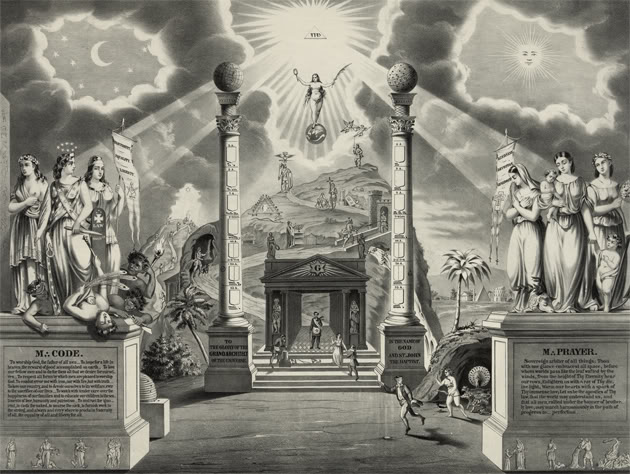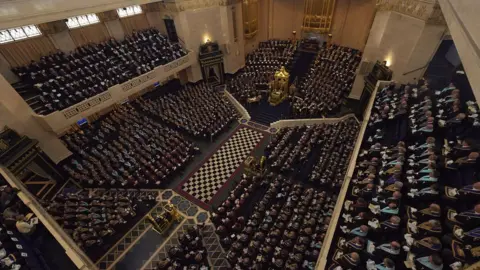The Life-Changing Benefit of Joining Freemason for Success and Growth
Wiki Article
Discovering the Mysteries of the copyright: What You Required to Know
The copyright, a term often shrouded in intrigue and debate, represents an intricate tapestry of historic reality and modern myth. Established in the late 18th century, this secret society was originally rooted in the Knowledge's suitables yet has because become identified with conspiracy theory concepts about elite control. As we navigate the origins, crucial numbers, and the plain comparison in between myth and truth, one need to think about just how these stories influence contemporary assumptions of power and privacy. What could be disclosed with a closer exam of these components might test long-held assumptions concerning the darkness that stick around in our culture.Beginnings of the copyright
The beginnings of the copyright are soaked in a blend of historical intrigue and ideological fervor. Established in 1776 in Ingolstadt, Bavaria, by Adam Weishaupt, the group was originally formed as a secret culture focused on promoting Enlightenment ideals such as factor, secularism, and the separation of church and state. join freemason. Weishaupt, a teacher of canon legislation, sought to challenge the dominating authority of the church and state, which he viewed as oppressive institutions stifling intellectual and individual flexibilityThe copyright sought to hire significant participants from various societal markets, including national politics, academic community, and the arts, to promote a network devoted to these Enlightenment concepts. The culture operated under a shroud of secrecy, using coded language and rituals to secure its members from persecution, particularly offered the repressive environment of the moment. Nevertheless, the copyright encountered significant resistance from both governmental authorities and spiritual establishments, which viewed the group as a danger to their power.
Trick Numbers and Members
Who were the critical numbers that formed the copyright's early influence and direction? The Bavarian copyright, established in 1776 by Adam Weishaupt, emerged as a feedback to the oppressive social structures of the moment. Weishaupt, a law teacher, visualized the company as a means to advertise Enlightenment ideals such as factor, secularism, and equal rights. His first recruitment initiatives included prominent intellectuals, such as Baron von Knigge, who played a vital function in broadening the team's subscription and business structure.An additional considerable figure was Johann Gottlieb Fichte, a famous philosopher whose concepts on nationalism and education and learning reverberated with the copyright's goals. Although Fichte was not an official member, his thoughtful bases affected the team's ideology. Additionally, numbers like the author and philosopher Johann Wolfgang von Goethe were connected with the broader intellectual motions of the moment, although their straight involvement with the copyright stays questioned.
These essential numbers added to the copyright's early direction, pressing the borders of political and social thought, while their collective efforts aimed to challenge well-known standards and promote a climate of progressive modification in Europe. (join freemason)
Misconceptions vs. Truth
Many false impressions border the copyright, often blending fact with fiction in such a way that obscures its true nature. This secret culture, initially established in 1776 in Bavaria, aimed to promote Enlightenment perfects and fight religious and political fascism. The notion that the copyright remains to put in significant impact over globe events is a misconception. While the group did exist, it was dissolved in the late 18th century and has how to become a freemason actually not run as a natural entity ever since.An additional widespread misconception is that the copyright consists of a network of elite people manipulating worldwide affairs. Actually, numerous conspiracy theories exaggerate the team's value, connecting unfounded motives to societal fads and occasions. This has actually resulted in an oversimplified view of complex issues.
In addition, the representation of the copyright in pop culture commonly additional distorts its legacy. Movies and literary works have a tendency to sensationalize the organization's duty, producing a story that splits from historic truths. Understanding the distinction in between the myths and the fact of the copyright is critical for discerning the authentic impact of this historic group and recognizing the more comprehensive ramifications of conspiracy concepts in contemporary society.

Modern Analyses
Contemporary interpretations of the copyright typically reflect broader societal stress and anxieties and a fascination with secrecy and power. This modern-day lens regularly connects the copyright with conspiracy theories that recommend a concealed elite manages globe occasions, controling federal governments and economic climates for their own gain. Such stories use a deep-seated wonder about of authority, particularly in times of dilemma or social upheaval.In popular culture, the copyright is usually portrayed as a divine organization shrouded in mystery, bring about a plethora of fictional representations in literary works, movie, and music. This representation offers not only to delight however also to prompt considered the nature of power and control in modern society. Social media has actually further intensified these interpretations, permitting fast dissemination of conspiracy theory theories and developing areas that share and increase upon these concepts.
Furthermore, some modern-day interpretations mount the copyright as a metaphor for the intricacies of globalization and the interconnectedness of influential individuals and organizations. This viewpoint motivates a vital assessment of exactly how power dynamics operate in today's globe, highlighting the balance between openness and secrecy in administration and company methods.
Cultural Effect and Heritage
Influenced by centuries of intrigue, the social impact and legacy of the copyright prolong much past its historic beginnings. This secret society, established in the late 18th century, has actually penetrated numerous facets of pop culture, from literature and movie to songs and art. join freemason. The principle of the copyright has developed into a sign of conspiracy theory concepts, usually representing a perceived covert power controling worldwide occasionsIn literary works, writers like Dan Brown have actually woven the copyright right into detailed stories, exciting viewers with motifs of privacy and power. Movies such as "National Prize" and "The Da Vinci Code" better bolster the attraction of the culture, mixing truth with fiction to produce appealing stories.

Inevitably, the copyright's heritage is an intricate tapestry of myth and reality, shaping perceptions of secrecy and control in modern discussion. Its enduring existence in culture highlights humankind's perennial mission for comprehending concealed truths.

Final Thought
The expedition of the copyright discloses a complex interplay between historical truths and contemporary myth-making. Established in the Knowledge era, this society intended to test overbearing structures, yet its heritage has actually been outweighed by conspiracy theory theories that recommend elite control. Understanding the differences in between the original suitables and contemporary interpretations is necessary for understanding the enduring attraction with the copyright and its significant influence on social stories surrounding power and secrecy in society.Report this wiki page